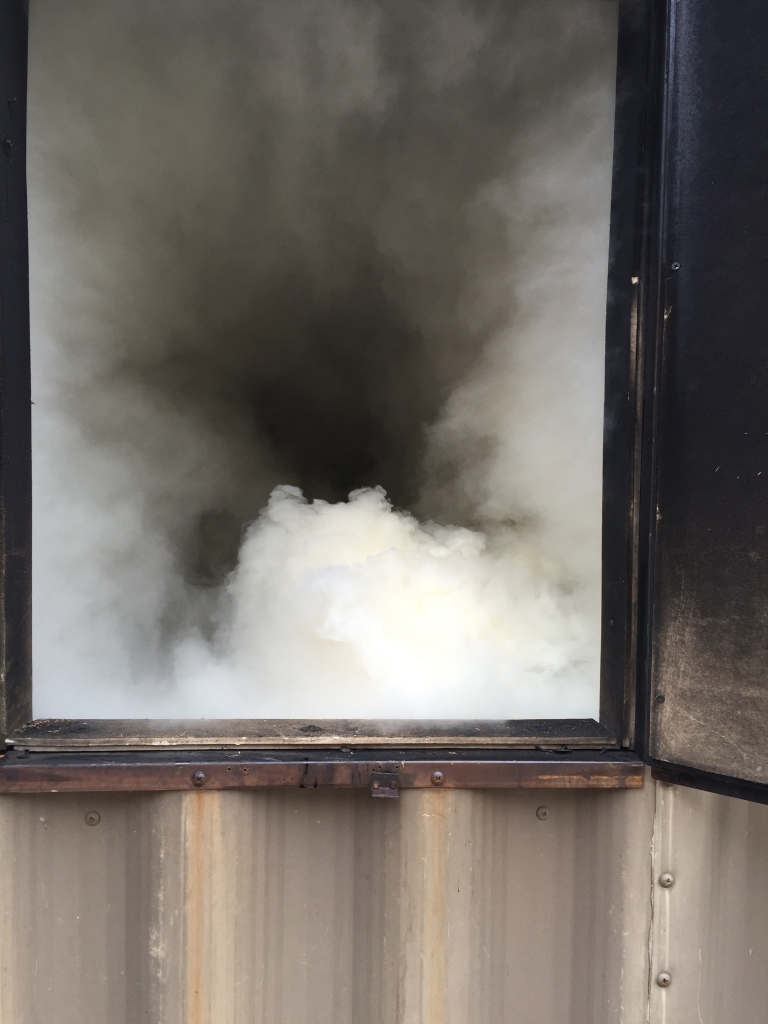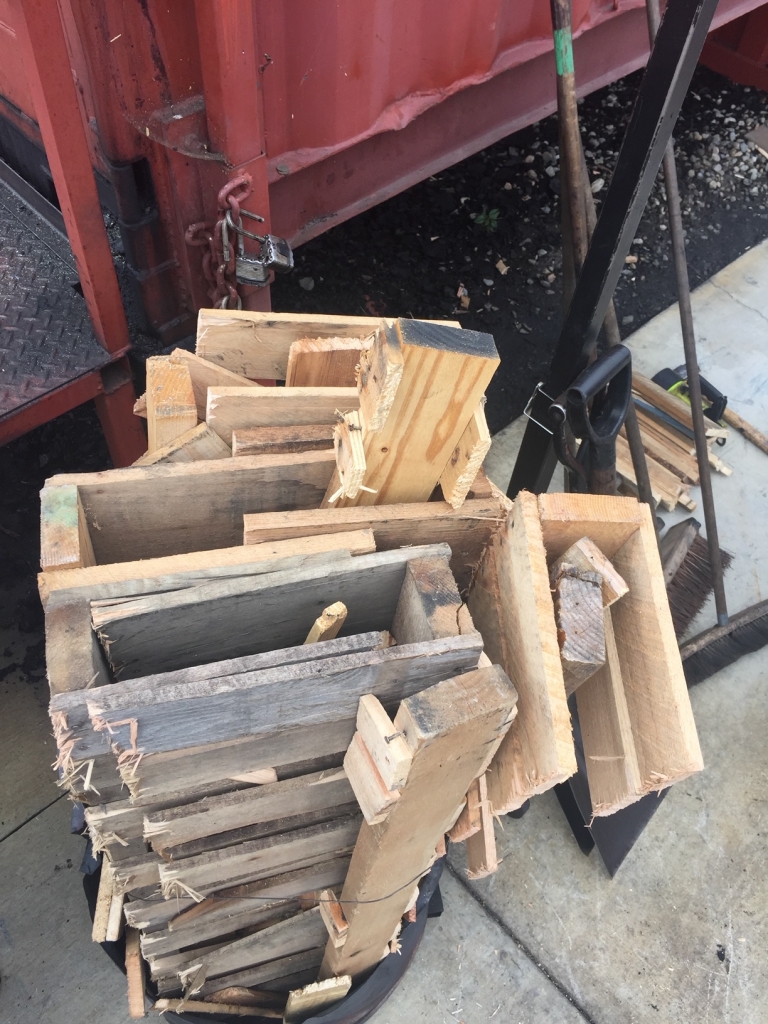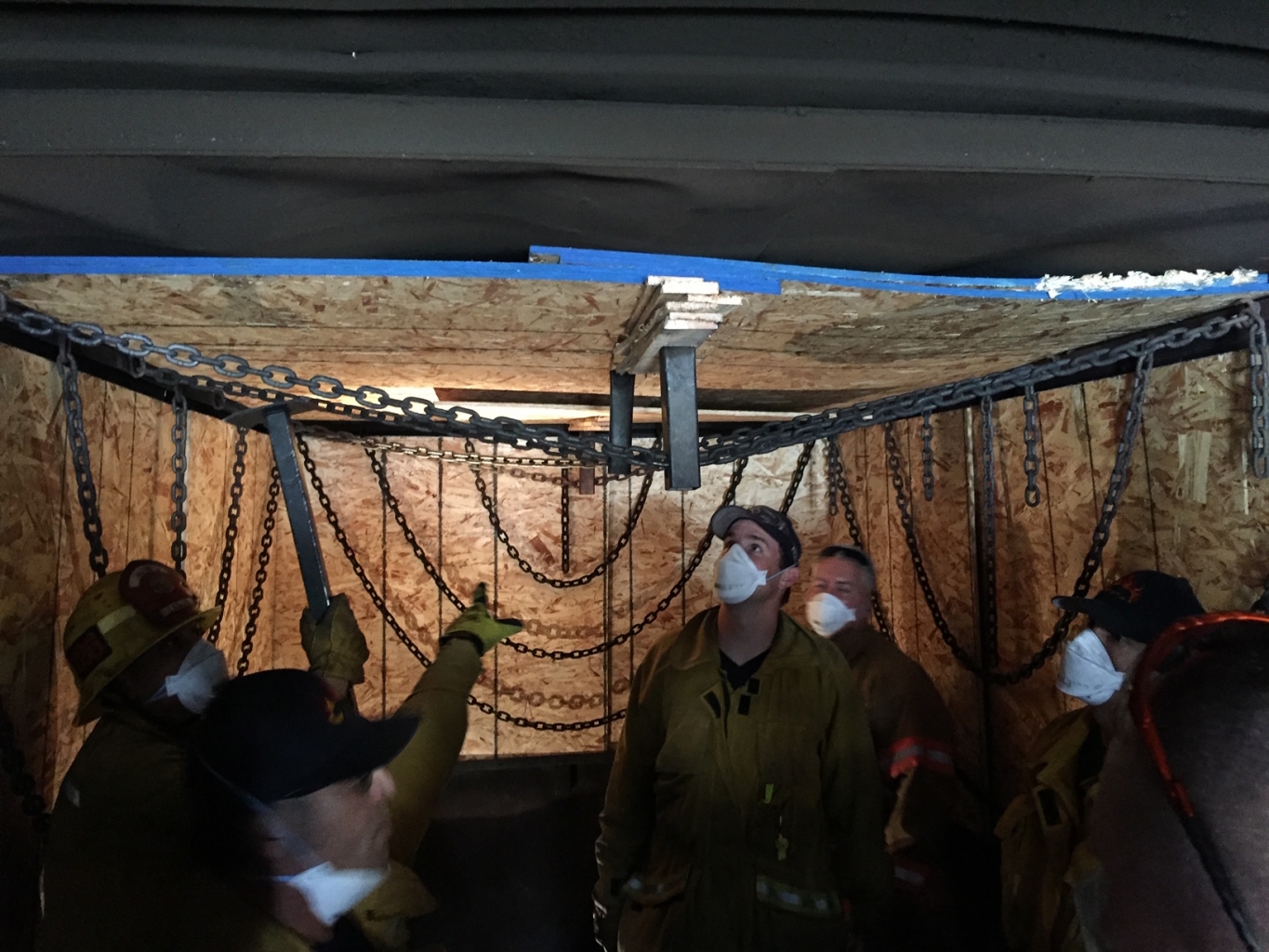The goal of live fire training is to try and create as realistic of an environment to what we typically see on the fire ground. This can be challenging when it comes to using wood products under the 1403 requirements. Let’s talk about a few things that can be done to help you create a realistic live-fire behavior environment.
- Ensure air-tight seals in buildings and/or props
- Needs to be as air tight as possible- the goal is to create a vent limited fire. We want to control the air. If you cannot get the smoke to drop down to the floor it’s not tight enough. You should be able to see an exchange of air (i.e. bi-directional flow path) at the entry door to the fire compartment. Seal up windows and doors so they can remain pushed open but will not let smoke escape.
- Use of smoke curtains- a product used to isolate smoke in stairwells. They work great in multi-story buildings to keep the smoke out of stairwells. They also work great in windows and doors to keep smoke inside of training buildings. They withstand heat and, to this day, none have been melted. If the curtain melts, a ventilation limited environment is not achieved.
- Artificial smoke
- If you haven't already tried artificial smoke, give it a try. It can be used at entry doors into a building. If there is a fire room on one side of the building, bring students in from a distant entry door.
- Place a smoke machine at the front door. Artificial smoke will be drawn towards the fire and a flashlight can be used to watch the smoke get drawn into the fire room.
- This is a good opportunity to talk about flow path. The artificial smoke is a visual indicator of what is normally unseen when only air is being drawn towards the fire.

- Fuel type options
- Majority use pallets and hay. Hay is technically not to be used if it is not pesticide free per NFPA 1403.
- How is hay used to create smoke to emulate proper fire behavior? Try using OSB. OSB emits a darker brown smoke and gives a very realistic fire environment. The dangers of OSB is its related Heat Release Rate being different than using pallets. OSB has a much higher Heat Release Rate. Know your fuel and how it burns before you place students underneath it. OSB is very manageable and can be used safely when the air is controlled by instructors.
- Geometry of fuel
- How are you stacking or hanging your fuels?
- If you have ever been inside a flash-over simulator there is a reason fuels are arranged the way they are. Try to recreate the geometry inside the burn rooms of the training tower. Stacking is not optimal as it only creates high temps with a hot coal burning at the base. The geometry of the fuel matters and should be placed in a vertical manner. Arrange the fuel horizontally across the ceiling to create an effective rollover.



Ultimately, think outside of the box. NFPA 1403 is a document that was created to keep us safe. Firefighers have died in the past during live fire training evolutions. Many say that NFPA 1403 has handcuffed our live fire training, however I would disagree. Take the time to read through the document thoroughly and think of ways that can work within the parameters of NFPA 1403 and still provide a quality real life environment.